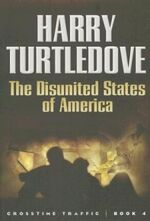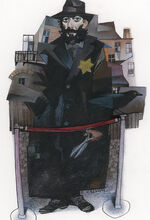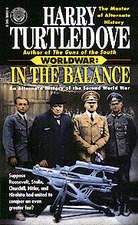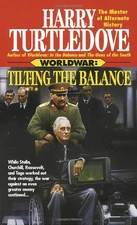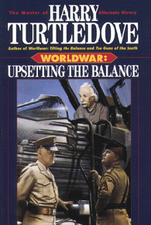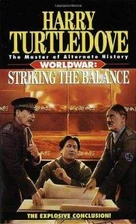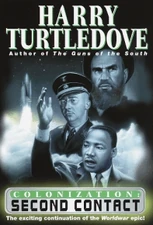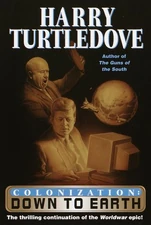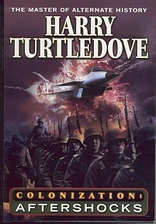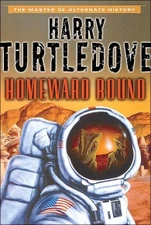No edit summary |
ML4E (Message Wall | contribs) m (Protected "World War I" ([edit=sysop] (indefinite) [move=sysop] (indefinite))) |
(No difference)
| |
Revision as of 22:58, 12 March 2018
For the equivalent war in the Southern Victory series, see Great War.
| World War I | |||||||
|---|---|---|---|---|---|---|---|
|
|||||||
| Belligerents | |||||||
| Allies and Associated Powers
| Central Powers
|
||||||
| Commanders and leaders | |||||||
| |||||||
World War I, also known as the Great War and "The War To End All Wars," was a global military conflict which took place primarily in Europe between 1914 and 1918. More than nine million soldiers and civilians died. The conflict had a decisive impact on the history of the 20th century.
The Entente, led by France, Russia, Britain, Italy and, from 1917, the United States, defeated the Central Powers, led by Austria-Hungary, Germany and the Ottoman Empire.
The fighting that took place along the Western Front occurred along a system of trenches and fortifications separated by an area known as no man's land. These series of fortifications ran from the North Sea to Switzerland. This system of static trench warfare defined the war for many. On the Eastern Front, the vast eastern plains and limited rail network prevented a trench warfare stalemate. But the scale of the conflict was just as large. The Middle East and the Italian Front saw heavy fighting as well, with lighter fighting in Africa and the Pacific Islands. Hostilities also occurred at sea and, for the first time, in the air. Finally, the strain that fighting a total war imposed on the great powers created opportunities for disaffected segments of the population in places such as Russia, Arabia, Lithuania, Ireland, and, in the end, Germany itself, to rise to rebellion against their governments.
The war caused the disintegration of four empires: the Austro-Hungarian, German, Ottoman and Russian. Germany lost its overseas empire and states such as Czechoslovakia, Estonia, Finland, Hungary, Iraq, Ireland, Latvia, Lithuania, Palestine, Poland, Saudi Arabia, and Yugoslavia gained independence. The cost of waging the war set the stage for the breakup of the British Empire as well.
World War I marked the end of the old world order, which had emerged after the Napoleonic Wars. The Treaty of Versailles was designed to end the war, hobble Germany, and expand the power of the victors. Instead, it set the stage for World War II.
World War I in The Case of the Toxic Spell Dump
During the First Sorcerous War, the Empire of Aztecia nearly joined the war on the Alemanian side, which would have led to an attack on the Confederated Provinces. This was prevented when a coup d'etat led to the mass execution of the Aztecian cabinet, and a replacement government who kept the Empire neutral.[1]
The eastern part of Frankia suffered greatly during the war, with both sides' toxic spells lingering on the ground after three quarters of a century.[2]
Alemania lost the war, but would return as a major threat a few decades later in the Second Sorcerous War.
Alkahest was used in the First War, but was deemed too potent even for a weapon, so it was not used in the Second.[3]
World War I in Crosstime Traffic
World War I in Curious Notions
| World War I | |||||||||
|---|---|---|---|---|---|---|---|---|---|
|
|||||||||
| Belligerents | |||||||||
| Central Powers | Allies | ||||||||
In the alternate designated as 3477 by Crosstime Traffic, Europe saw a brief conflict in 1914. The Schlieffen Plan, Germany's plan for a two front war against France and Russia, proved quite successful in the fall of 1914, aided in part by the slow Russian offensive. Germany defeated its Entente enemies, and began its rise as a global power, eventually becoming master of the world.
World War I in The Disunited States of America
| World War I | |||||||||
|---|---|---|---|---|---|---|---|---|---|
|
|||||||||
| Belligerents | |||||||||
| United Kingdom and allied states | Prussia and allied states | ||||||||
In the early 20th century, the Great War was fought between Prussia and the United Kingdom, with numerous other nations allying with either side. Given that many Germans had settled in North America, several of the North American states sided with Prussia during the war, leading to bloody conflict on both sides of the Atlantic Ocean.
World War I in "Ils ne passeront pas"
World War I was a bleak, ugly event in human history. The Battle of Verdun was such a terrible battle that when God attempted to pass judgment on Earth (as foretold in the Book of Revelation) at Verdun, the French and German troops assumed that they'd been victims of some new weapon, and so viewed the affair with indifference.
World War I in The Man With the Iron Heart
Supporters of the continued American occupation of Germany harkened back to World War I to demonstrate what could happen if Germany was not totally defeated.
World War I in "Must and Shall"
Germany sought to prevent America's entry into World War I by fomenting the Thanksgiving Revolt among America's white Southern subjects. Contrary to expectations, the USA suppressed the Revolt, entered the war in Europe, and eventually shared in the victory.
World War I in "Shtetl Days"
The war that was once known as either the "Great War" or the "World War" came to be known as the War of Humiliation by the Third Reich, which "remedied" its defeat by winning the War of Retribution.
World War I in "Uncle Alf"
| World War I | |||||||||
|---|---|---|---|---|---|---|---|---|---|
|
|||||||||
| Belligerents | |||||||||
| Entente | Central Powers | ||||||||
| Commanders and leaders | |||||||||
| Alfred von Schlieffen | |||||||||
Germany triumphed over its enemies in the Great War in 1914, when Alfred von Schlieffen personally oversaw the implementation of his plan for a two-front war. It occupied Belgium and France after the war.[4] Two years later, Germany would help Russia put down a communist revolution in 1916.[5]
World War I in Worldwar
The years following World War I were lean ones in Germany, and Adolf Hitler and the Nazi Party were able to exploit discontent over these conditions and rise to power. They promised Germany rearmament and revenge, and the victors of World War I failed to stop him. Germany launched World War II, which was interrupted by the arrival of the Race's Conquest Fleet.
After the Race defeated Germany in the Race-German War of 1965 and imposed its own harsh peace, the winners of World War I warned Fleetlord Atvar of their own difficulties enforcing the Treaty of Versailles. Atvar boasted that the Race was more thorough and patient than the human powers, but his successors fared little better than the British and French in enforcing their terms, and within a few decades Germany was once again able to threaten the Race.
Noteworthy World War I veterans who also fought the Race include Mutt Daniels of America, whose experience as a soldier earned him the rank of sergeant when the Race invaded U.S. soil, and; Heinrich Jäger of Germany, who saw the first British tanks and subsequently became a skilled German tank commander.
World War I in "Zigeuner"
Adolf Hitler served on the Eastern Front of World War I. During his rise to power in Germany, Hitler claimed that while his division was fighting the Russian Empire, they also had to contend with the Zigeuner people. Hitler claimed that the Zigeuner stole horses and boots and telegraph wire, helping to cause unnecessary German casualties.[6] At the same time, Hitler also saw how badly the Russians treated the Jews they found in the Austro-Hungarian provinces they overran. Hitler already hated the Russians, and their anti-Semitism left him sympathetic to the Jews.[7]
Upon his ascendancy, Hitler declared Zigeuner to be Untermenschen, along with Bolsheviks and homosexuals, and actively sought to eliminate these groups from Europe.[8]
See also
- Ecnarfian War, a vague analog of World War I in "Running of the Bulls."
References
- ↑ The Case of the Toxic Spell Dump, p. 340.
- ↑ Ibid., p. 12.
- ↑ Ibid., 20.
- ↑ See e.g.: Atlantis and Other Places, pgs. 341-342, HC.
- ↑ Ibid., pgs. 343-344.
- ↑ Asimov's Science Fiction, September/October, 2017, Vol. 41 Nos. 9 & 10, pg. 94-95.
- ↑ Ibid., pg. 100.
- ↑ Ibid., pg. 99.
| ||||||||||||||
| |||||||||||||||||||
| ||||||||||||||||
| ||||||||
| |||||||||||||||||
| ||||||||
| ||||||||||
| ||||||||||||||
| |||||||||||||||||||||||||
| |||||

